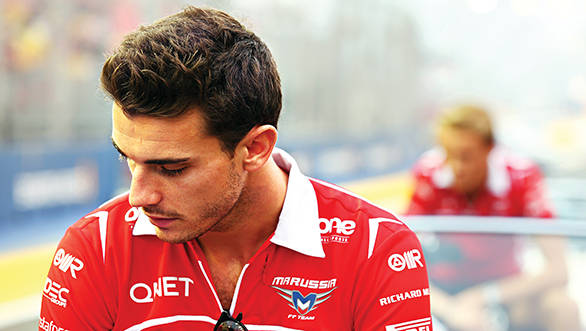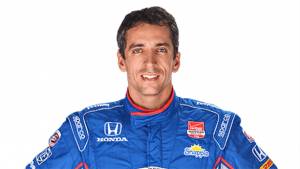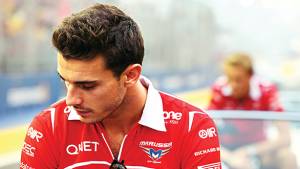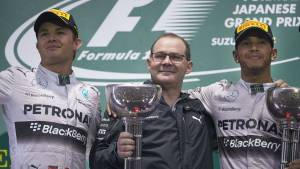Crash safety and the racecar driver
Let's be honest, despite the venue looking spectacular on TV, the inaugural Russian Grand Prix was a bit of a snoozefest. There really weren't many talking points from the race and as I'm writing this column straight after the Russian race, I thought it would be better to look at the incidents that brought the F1 race to a close in Japan.

In some ways, an uneventful race wasn't such a bad thing for the Formula 1 fraternity, especially for Charlie Whiting and his team in Race Control after the week that they've had. First of all, I must say, I found it really insensitive and actually quite annoying how many times the drivers and team management were asked whether they were thinking of Jules and how they were going to focus on their jobs by the TV and print media. They didn't need reminding every few minutes that a member of the F1 family was fighting for his life and there's nothing that they can really do but pray for his recovery.
We racing drivers are a strange breed. At Le Mans this year, Loic Duval had a massive crash and I was on track when it happened and so, drove past the wreckage with Loic sitting there unconscious. I was shocked of course and for the 45 minutes that the session was red flagged, I was a bit of a mess because I really thought he was going to be critically injured. But once we got going again, my brain automatically went into driver mode and sort of blocked out what I had seen. It was weird that despite seeing a fellow driver injured badly, the racing brain is so focussed that I went through that same corner quicker on my first timed lap after the red flag than at any time during the session before the accident!
As drivers, we all accept the risks involved in our sport. We know it's dangerous, we know people can get hurt or killed, we know that every time we get in the car, there are risks that we take which could prove costly. As I say, every time we discuss these huge tarmac run off areas, making the sport too safe also detracts from the challenge, so any changes need to be thought through. We never want to see another driver get hurt but it sadly does happen and the main thing is to understand what happened and learn from it.
Jules had a very unusual accident, where he was in the wrong place at the wrong time and hit the wrong thing. The FIA in the Max Mosley era, along with Charlie Whiting and his team, have done tremendous work to improve safety in the sport. Charlie is one of the biggest assets to the sport and his calm approach is exactly what is needed to steer the ship at this moment. In the aftermath of Suzuka, there has been a lot of criticism and ideas being shouted out by journalists, fans, bloggers and anybody with an Internet connection and an interest in F1, but a knee jerk reaction is the worst thing.
The closed cockpit idea is worth investigating, but I'm not convinced that it really would've helped Jules in this case. The closed cockpit could be safer, but it will fundamentally change the look and ethos of Formula 1. The change in the car noise earlier this year caused an uproar and I believe this will be an even bigger change so it needs to be carefully thought through. Besides I'm told that the thickness of the glass material you may need could create other visibility issues anyway.
There were also a few people saying that track conditions were too dangerous to keep racing at the end. I wasn't on track so it's not fair to have a strong opinion on this but looking from the outside, it didn't look worse than other wet races we've seen. Besides, the majority of the cars were on intermediate tyres, which is a clear indication that it wasn't completely undriveable.
Charlie has rightly ruled out the Code 60 type rule in a yellow flag zone where the drivers have to slow down to 60kmph through the yellow flag zone as we do at Le Mans. This may work at a long 24 hour race but not in a two hour sprint. Using a common delta time to all cars through the accident zone is interesting but I still think it will be very tricky to manage. Let's say Lewis is leading and Nico has pitted so is 20 seconds behind on the road. If Lewis slows to the delta time in a yellow zone, but goes green before Nico gets there, that could fundamentally alter the outcome of a race. Moreover, I don't know how the FIA will be able to calculate what that delta time should be if track conditions keep changing like they did in Suzuka.
I think that, ultimately, the driver's judgement needs to be trusted in this case. Yes, everyone is going to fly as close to the edge as possible and sometimes it will go wrong, as was the case in Suzuka. Overall though, the guys on track have the best feel and information to judge what is a safe speed where they are fully in control and what isn't and they should be trusted to manage that.
I think the big lesson to be learnt is really how we carry on recovering cars from dangerous positions on the side of the circuit without having to use the safety car every time, as that will just turn the races into lotteries. Perhaps cranes like we have in Monaco need to be used everywhere, which are placed behind the safety barriers, although I don't know how feasible those are at bigger circuits. I can hear Charlie's brain already in high gear churning out ideas.














